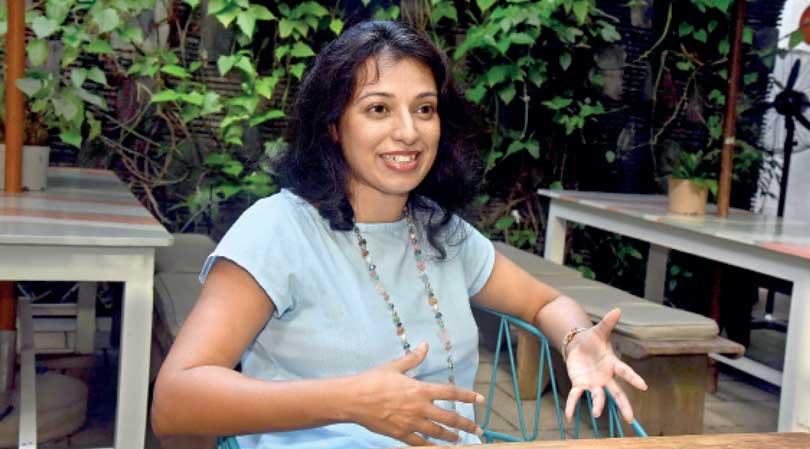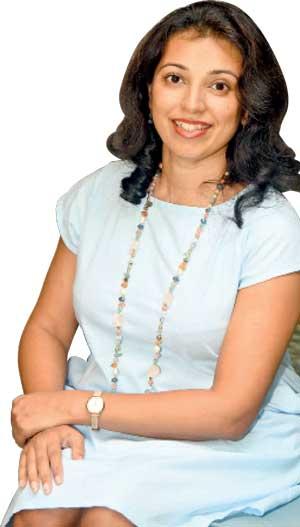31 Aug 2021 - {{hitsCtrl.values.hits}}

 A visit to the museum was something that we all anticipated in our childhood. Even though the common notion is that a museum is a place that preserves artifacts of historical importance, modern museums have largely shifted from this idea. “A museum is a hallmark of modernity,” opined Hasini Haputhanthri, museologist, oral historian, sociologist, researcher and author of the book ‘Museums, Memory and Identity Politics in Sri Lanka’. A proud product of Good Shepherd Convent, Panadura, Haputhanthri was also a student at Sirimavo Bandaranaike College where she pursued her A/Ls. Trained as a sociologist at Delhi University, India and Lund University, Sweden, she has specialized in Oral History and Museum Anthropology at Columbia University, New York.
A visit to the museum was something that we all anticipated in our childhood. Even though the common notion is that a museum is a place that preserves artifacts of historical importance, modern museums have largely shifted from this idea. “A museum is a hallmark of modernity,” opined Hasini Haputhanthri, museologist, oral historian, sociologist, researcher and author of the book ‘Museums, Memory and Identity Politics in Sri Lanka’. A proud product of Good Shepherd Convent, Panadura, Haputhanthri was also a student at Sirimavo Bandaranaike College where she pursued her A/Ls. Trained as a sociologist at Delhi University, India and Lund University, Sweden, she has specialized in Oral History and Museum Anthropology at Columbia University, New York.
Gracing this month’s cover story is Hasini herself, who spoke about her inspirations to become a museologist, scope for those interested in the field in Sri Lanka and the government’s responsibility on the repatriation of looted artifacts.
Excerpts :
Q : What inspired you to become a museologist?
Discovering museology wasn’t a straightforward thing for me. It took a while. In school I was always a history buff and an art lover but in school history didn’t inspire me much, probably because of the way in which it was taught etc. Even when school took me to the Colombo museum ;probably the first museum I ever visited in my life at a young age), I can’t remember being inspired. It wasn’t a very engaging place. We were just rushed through it. It was much later in life, when I was working on a project on Education and Culture while at the German Development Cooperation that I came across the power of museums. Here, I found that museums can be amazing places that can change your outlook on life. I remember taking a course on teaching history for the future which involved a lot of museum visits in Germany, Canada, Poland etc. We visited a lot of museums and studied how museums addressed sometimes controversial and difficult topics. That is the point where I started seeing museums in a new light. After working with German Development Cooperation for 10 years I took a sabbatical and went to New York and studied museology, in fact museum anthropology at Columbia University. I also took an internship in one of the museums in New York which was dealing with history of immigrants in New York. They were very inspiring as they even used theatre to reenact some of the journeys these immigrants took across and how they started their lives. They have recorded oral histories of these immigrants. My fascination with museums comes from a point where museums and society comes together rather than from a purely artistic point of view.
I also took an internship in one of the museums in New York which was dealing with history of immigrants in New York. They were very inspiring as they even used theatre to reenact some of the journeys these immigrants took across and how they started their lives.
 Q :Museology is a new field in the Sri Lanka. Have you tried applying your knowledge and expertise here?
Q :Museology is a new field in the Sri Lanka. Have you tried applying your knowledge and expertise here?
When I came down I started engaging with museums but there wasn’t much done. People hadn’t heard of museologists or museology before. Then I started doing a baseline survey to find out how many museums are out there in Sri Lanka. I then made an inventory of museums and we have around 120 museums in the country. We keep opening up new museums. It’s a growing field I would say. Since I’ve returned I’ve also had young graduates choosing to study it for masters, so I would introduce museology as a subject of the future. All over the world it has grown tremendously. There’s an initiative to start a modern art museum, there’s a museum at the Lotus Tower, there was a new museum on ancient technology that was opened in Polonnaruwa. Some old museums are getting revamped. It’s a good time to start talking about the field as we need more talents in the field since new museums are opening up.
Q : Having visited museums across the world what more do you think should we add to our museums to make them more interesting for visitors?
First is for us to change our idea of a museum. We are still in the old school thinking of what a museum is. For us a museum is a place where we preserve culture. Of course the preservation of artifacts is an important task of a museum. But it’s only one task. That was the 18th century understanding of museums and the rest of the world has moved on and has coined the term New Museology. Therefore museums need to engage with current issues of society such as poverty, gender, inclusion, conflict etc. Whatever societies are going through, museums have a responsibility to create spaces for public engagement around these issues. Western museums have really moved along with this idea. They do a lot of programmes. Therefore it’s not just a place that has a collection of objects but there are workshops done. It’s a place where children and teachers come to get trained. Teaching normal subjects also happen in these museums today. Museums can offer interdisciplinary, creative ways of approaching even the most basics of subjects. We could incorporate museum education and pedagogy, interaction of exhibitions – there aren’t many guided tours offered, not much technology is being used to interact. Curation is the third component in which we can go a long way. It’s not a famous concept if you think about it in Sinhala because it doesn’t even have a proper name. It’s a highly technical subject. But curation is the way you exhibit objects in a way that speaks to the audience. A real curator brings an inanimate object to life. People need to recognize it as an exciting, growing field to be engaged in. At the moment there may be limited opportunities in Sri Lanka. But in future with the growth of tourism and the cultural sector there’ll be a better demand.
Some old museums are getting revamped. It’s a good time to start talking about the field as we need more talents in the field since new museums are opening up.
Q :What sort of career opportunities are available for those who study museology and related fields?
If someone wants to be a museologist, there are lots of opportunities around museums, where you can be a curator, museum manager, graphic designer etc. In the West there are companies that only design museums. Museums are a hallmark of modernity. The museum is an equivalent of a cathedral or a temple built 5000 years ago. We call them secular temples for these reasons. These companies have all the elements that are required to build a museum or an exhibition design. The companies will employ writers who will conceptualise and write stories, exhibition planners, sculptors who can make replicas, architects and a lot of other opportunities are out there in the world. If you study art history you can work for an art gallery, museum or museum design companies. But in Sri Lanka this is not yet there. Mostly it’s only the state that invests in building museums. But we have a couple of non-state initiatives such as the Martin Wickremesinghe Museum which is done by a trust, the Museum of Modern and Contemporary Art which is in the making. For the moment what I do see is that it’s a growing field in Sri Lanka and COVID has had a big impact on the industry like every other field. The newest trend is going digital with digital collections etc. Museums need a diverse group of talents and people with diverse skills need to come together. For the moment our state museums aren’t approached with this dynamism. But this has to change.
Q : Many of our artifacts have been looted and have ended up in museums in the West. What is your take on this issue?
This is the story of the museum. We must admit that they are not pure institutions and that they have dark histories. This is a consequence of colonialism. Not only in Sri Lanka but all over the world the best of cultures were exploited and displayed in Western museums. One thing is that these countries have taken good care of the artifacts. Sometimes in a much better way than we would have. But we really have to be on board this whole discussion which is rocking the museum field today which is about repatriation of objects. Two years back there was a lecture organised by the Postgraduate Institute of Archaeology at University of Kelaniya where a Director of the National Museum in Vienna gave a lecture and she was showing some looted artifacts that belong to Sri Lanka. They said they are ready to start a process of repatriation, a lot of Dutch museums are talking about it. But then, we also need to claim it from our side. We should be building up our industry and also asking for our looted artifacts. It has to go through the Sri Lankan government through the other governments and a process of negotiation and bureaucracy has to start because we are talking about reversing atrocities that have happened 100-200 years ago. It needs to have a process where it’s returned and acknowledged. Lots of artifacts are now being returned to countries such as Vietnam, Cambodia and Africa.
Q :What is the most satisfying part about your career?
The people I get to meet especially when I do my museum walks. I get to meet people form all parts of Sri Lanka and the world. I have taken students from Moneragala who have never seen a museum to students from Akkaraipattu etc. and it’s so inspiring. The joy of seeing their eyes light up is indescribable. Then there’ll be a German or American National who would walk up to me and teach me something I didn’t know about an object. The fact that I’m able to keep growing is very rewarding. I learn so much every time I conduct a museum walk. It gives me the opportunity to learn so many different things and to connect with people and have a common bond with them and to inspire them. The word museum comes from the word muse which means inspiration. Museums should be places where you should go to find inspiration if you are looking for answers in life.
Q : Have you faced any challenges as a female in the career?
Sometimes this topic of gender which is very important to talk about can also lead to generalized understandings. Of course I’m a woman but it doesn’t mean I had less opportunities than all the men. There are a lot of identity factors at play which affects that. I’m a woman who was fortunately born in an urban middle class background, where I could go abroad and study. So I had a lot of opportunities which may not be available for all the women in the country. Just because you’re a woman it doesn’t mean you’re at a disadvantage all the time. I’m not saying there aren’t disadvantages. I have worked with lots of women groups in Puttalam and rural areas and life is very different with the amount of opportunities they have. Access to quality education does not exist for them. The same life choices I had are not available for them. Therefore we need to bridge that gap between those who have access to opportunities and those who do not. Gender is one dimension but it’s not the whole story. My personal story is that being a woman gave me a lot of opportunities. When you’re a woman it’s not that you’re at a disadvantage by default. You do have a lot of opportunities that you can grab. We need to bring that in from a different perspective. What do girls want to achieve in their lives? The discussion at a more middle class level should be about supporting young women to make good choices about their life in general. We need to work at different levels to ensure that young girls and boys outside Colombo have access to quality education.
By Kamanthi Wickramasinghe
Pix by Kithsiri De Mel
Location : Milk and Honey Café
24 Nov 2024 1 hours ago
24 Nov 2024 2 hours ago
23 Nov 2024 23 Nov 2024
23 Nov 2024 23 Nov 2024
23 Nov 2024 23 Nov 2024